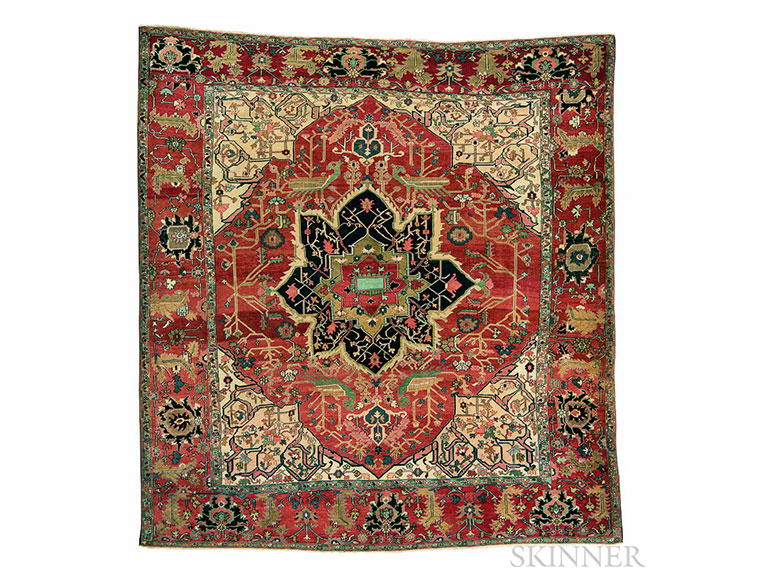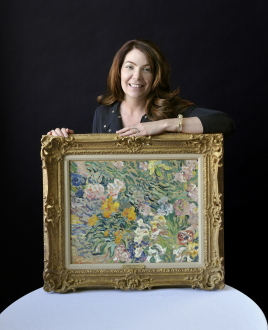Where to start when decorating or redecorating a room? Savvy designers often recommend jumping in feet first or, if you prefer, working from the bottom up. In other words, take your design cues from a favorite rug.
A rug is a visually prominent design element. Its color, pattern and texture set the palette, tone and feel of the space it enhances. A new rug or a rug that’s new to your home, can be a transformative magic carpet.
Whether it’s a treasured heirloom or a spectacular contemporary creation, there’s a huge selection of floor coverings today from around the world to inspire and integrate any décor, from strictly traditional to wildly eclectic. It makes design sense and financial sense, too, to start with rugs, since a fine rug is often the costliest single item in a room.
Moreover, intriguing, unique, antique, vintage rugs are more affordable than ever. And combining different styles and periods creates an ambience that’s entirely personal.
Versatility is a prime guiding principle in home design today. Among the many adjustments that we’ve learned to make during this largely stay-at-home year has been the importance of making spaces serve multiple needs.
“Sheltering in place” has changed the way we use and think about the place we call home. A living room is a family social hub and also a study space, an office, a dining area — sometimes all of these at once. Bedrooms aren’t just for sleeping; they’re for working and working out, too. And many homes are also now multigenerational to a greater extent than ever.
Rugs come to the rescue. Instead of one large carpet or wall-to-wall floor covering, several smaller rugs can define dedicated spaces within a bigger room. Lively, playful, serene, business-like — area rugs set the tone.
The wide variety of Oriental rugs (handwoven textiles from the Middle East, with a large subset made in Iran and known as Persian carpets) are particularly adaptable to this use. They range from the traditional intricate patterns of urban workshops to exuberant tribal designs and are renowned for their rich colors and durability.
The world of rugs spreads far beyond the well-known and well-loved Oriental rugs. Swedish rugs from the 1940s and ’50s are great for a modern interior or a provocative contrast in a traditional one. Chinese rugs offer a wide range of shapes, sizes and patterns, including brilliantly colorful Art Deco examples from the 1920s and ’30s.
Antique and vintage rugs are a perfect fit for today’s homes and today’s values. Older rugs are distinctive, one of a kind. They’re mostly made of natural materials — wool, cotton, silk. If properly cared for, they give decades of service and hold their value.
Rug expert Lawrence Kearney, with long experience in rugs and textiles both in auction and retail settings, offers some insider advice:
- Auctions are an excellent source for estate rugs, reasonably priced older pieces that are fresh to market.
- Deal with trustworthy sellers. Watch out for painted areas on old rugs. It’s been known to happen — magic markers used to fill in worn spots that can’t be repaired.
- Use high-quality pads underneath all rugs, to protect them from wear and keep them from slipping.
Today’s home design marketplace offers more choices than ever before. That’s especially true when it comes to rugs. Carefully chosen floor coverings can enliven and refresh living spaces more than just about any other design element. There is only one rule that really matters: Buy what you love.
For more, contact Katie at kwhittle@skinnerinc.com or 212-787-1114.


